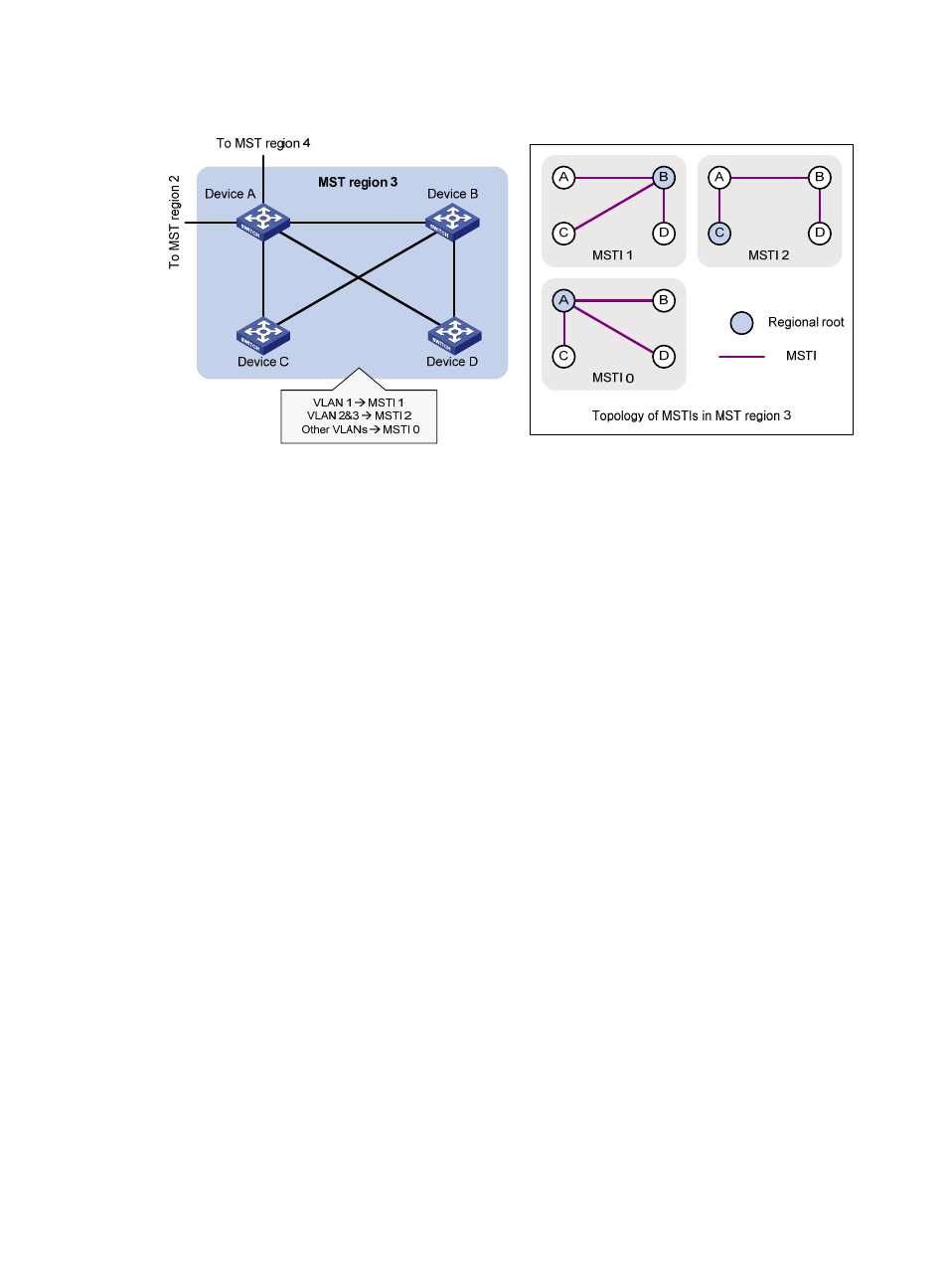Mst region, Msti, Vlan-to-instance mapping table – H3C Technologies H3C WX5500E Series Access Controllers User Manual
Page 74

63
Figure 18 Network diagram and topology of MST region 3
MST region
An MST region consists of multiple devices in a switched network and the network segments among them.
All these devices have the following characteristics:
•
A spanning tree protocol is enabled.
•
Same region name.
•
Same VLAN-to-instance mapping configuration.
•
Same MSTP revision level.
•
Physically linked together.
Multiple MST regions can exist in a switched network. You can assign multiple devices to the same MST
region. In
, the switched network comprises four MST regions (MST region 1 through MST region
4), and all devices in each MST region have the same MST region configuration.
MSTI
MSTP can generate multiple independent spanning trees in an MST region, and each spanning tree is
mapped to specific VLANs. Each spanning tree is called an "MSTI."
In
, MST region 3 comprises three MSTIs: MSTI 1, MSTI 2, and MSTI 0.
VLAN-to-instance mapping table
As an attribute of an MST region, the VLAN-to-instance mapping table describes mapping relationships
between VLANs and MSTIs.
In
, the VLAN-to-instance mapping table of MST region 3 is: VLAN 1 to MSTI 1, VLAN 2 and
VLAN 3 to MSTI 2, and other VLANs to MSTI 0. MSTP achieves load balancing by means of the
VLAN-to-instance mapping table.
CST
The CST is a single spanning tree that connects all MST regions in a switched network. If you regard each
MST region as a device, the CST is a spanning tree calculated by these devices through STP or RSTP.
The blue lines in
represent the CST.
